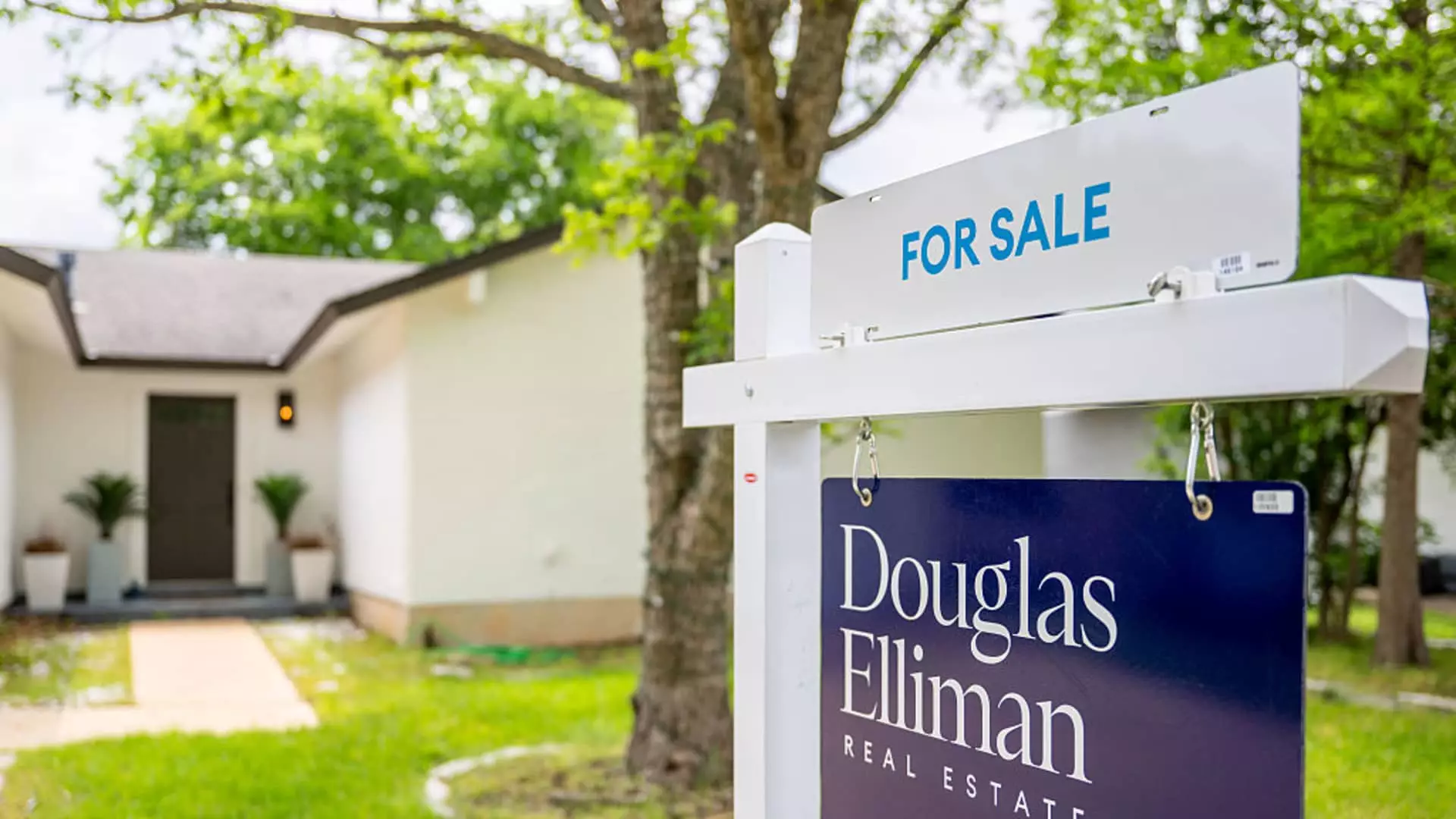In the world of real estate, every statistic carries a weight that can influence personal financial decisions and, by extension, the broader economy. The National Association of Realtors (NAR) recently reported a meager increase of 0.8% in the sales of previously owned homes for May, nudging the annualized rate up to 4.03 million units. While this rise might seem encouraging on the surface, it is vital to note that the increase falls short of analysts’ expectations, who had predicted a decline of 1%. Moreover, this figure marks a 0.7% decline compared to the same month last year, indicating that despite a slight uptick, the market remains fragile and riddled with uncertainties.
The Northeast Shines, But at What Cost?
Intriguingly, the Northeast region experienced the strongest month-to-month performance with a 4.2% rise. However, this localized boom does not conceal the bigger picture, where sales in the West plummeted by 5.4%. One must consider that the West is the most expensive region in the country, and with such a hefty price tag, it seems even affluent buyers are retreating. The disparity between regional performances further illustrates how stark the divides are within the American housing market. Such inconsistencies raise important questions about affordability and financial sustainability in housing markets across the country, especially in contexts where living expenses continue to climb.
The Mortgage Rate Dilemma
A fundamental issue constraining the housing market is the high mortgage rates, which have lingered over 7% since April. For many potential buyers, these elevated rates stifle hope and possibilities. Lawrence Yun, NAR’s chief economist, states that a reduction in mortgage rates is essential to stimulate buyer interest. The overall affordability crisis looms large, leading to a significant impact on first-time homebuyers, whose participation declined to an alarming 30%. The prospect of obtaining a home seems daunting when faced with persistent high-interest rates, thus dissuading a generation eager for independence and financial investment.
Inventory Increases: A Double-Edged Sword
Interestingly, the NAR reported a notable increase of over 20% in the supply of homes compared to last year, totaling 1.54 million units available at the end of May. Despite appearing favorable, this increase only slightly buoyed overall sales due to a continuing mismatch between demand and affordability. At a 4.6-month supply, this inventory level remains historically low, contributing to the upward pressure on prices. The median price of homes sold in May reached a staggering $422,800, marking its highest for this month. It is unrealistic to celebrate this inventory growth when its characteristics suggest it can’t fully satiate the insatiable demand of a populace yearning for housing.
$1 Million Plus: The Disillusionment of Luxury Markets
The luxury segment of the market, which had outperformed lower price points for nearly two years, is starting to show signs of a slowdown. Sales in the $1 million-plus category dipped compared to last year. As the stock market experiences turbulence, high-end buyers appear more cautious, revealing that even wealth doesn’t shield against economic realities. This indicates a shift in consumer confidence, as prospective homeowners grow wary of unsteady investments.
While it’s true that some transactions in the $750,000 to $1 million range reflected a modest 1% improvement, it raises concerns that luxury sales may be losing their former luster. As buyers become more calculative, it’s crucial to recognize that housing is not merely a financial asset, but a fundamental necessity that must align with authentic economic conditions.
Time on Market: A Worrying Trend
Another striking piece of data is that homes are languishing on the market longer than last year. The average time to sell a home increased to 27 days—despite being a relatively short period historically—with the previous year clocking in at 24 days. This subtle yet unsettling extension indicates an ambivalence from buyers who weigh their options meticulously. The current zeitgeist suggests that confidence is wavering, pushing individuals into prolonged decision-making processes that ultimately frustrate sellers and leave homes unsold.
In an environment where homeownership is increasingly challenged, it is crucial for policymakers to grapple with these issues head-on. Housing is not just a commodity; it’s a basic human right. Our economic resilience necessitates an inclusive and sustainable housing market where all individuals can aspire to secure a home, free from the persistent barriers that currently burden them.

